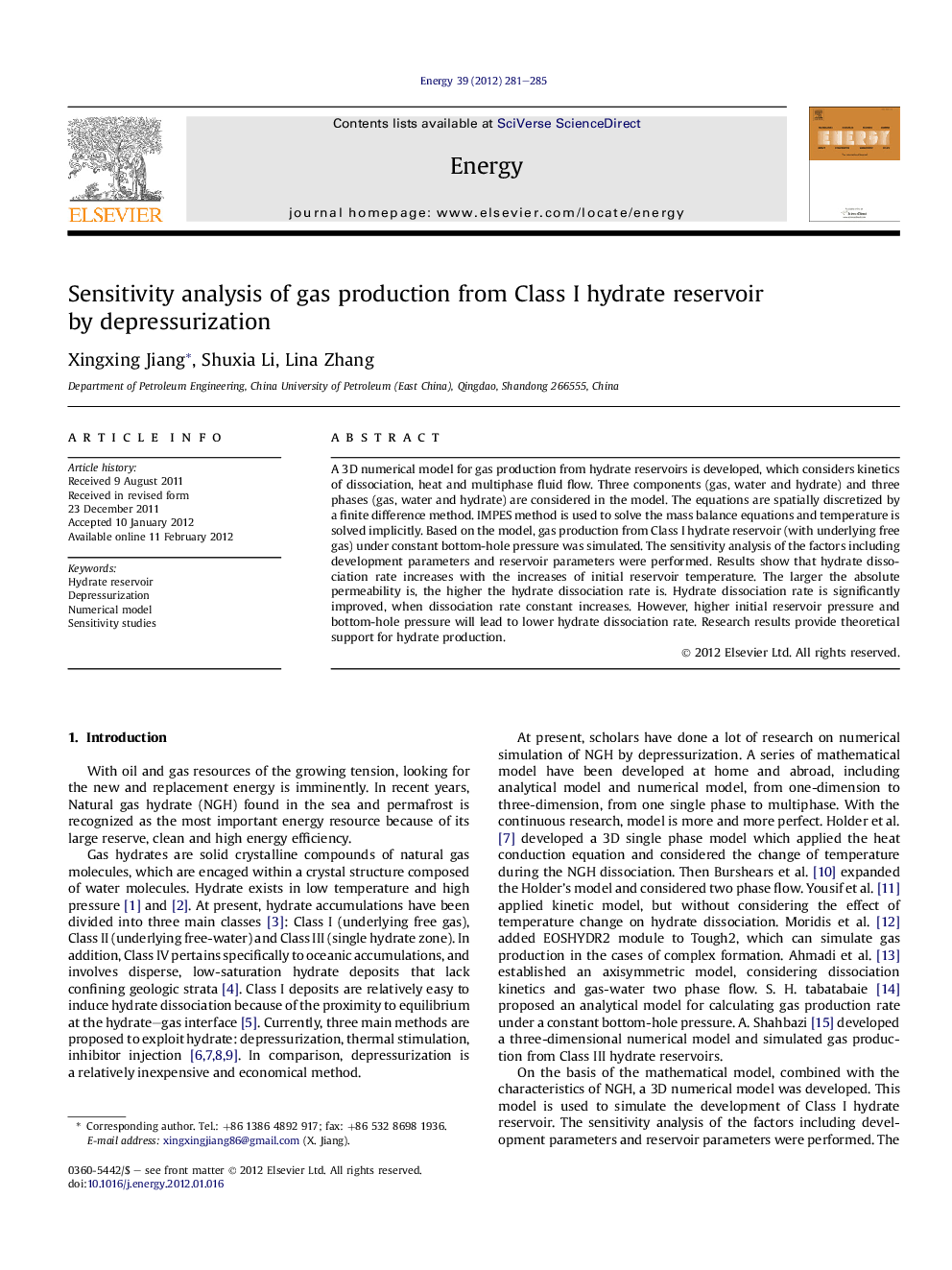| Article ID | Journal | Published Year | Pages | File Type |
|---|---|---|---|---|
| 1734344 | Energy | 2012 | 5 Pages |
A 3D numerical model for gas production from hydrate reservoirs is developed, which considers kinetics of dissociation, heat and multiphase fluid flow. Three components (gas, water and hydrate) and three phases (gas, water and hydrate) are considered in the model. The equations are spatially discretized by a finite difference method. IMPES method is used to solve the mass balance equations and temperature is solved implicitly. Based on the model, gas production from Class I hydrate reservoir (with underlying free gas) under constant bottom-hole pressure was simulated. The sensitivity analysis of the factors including development parameters and reservoir parameters were performed. Results show that hydrate dissociation rate increases with the increases of initial reservoir temperature. The larger the absolute permeability is, the higher the hydrate dissociation rate is. Hydrate dissociation rate is significantly improved, when dissociation rate constant increases. However, higher initial reservoir pressure and bottom-hole pressure will lead to lower hydrate dissociation rate. Research results provide theoretical support for hydrate production.
► A 3D numerical model for gas production from hydrate reservoirs is developed. ► China University of Petroleum does a lot of experiments to measure the equilibrium relationship. ► Based on the model, gas production from Class I hydrate reservoir under constant bottom-hole pressure was simulated. ► The sensitivity analysis of the factors including development parameters and reservoir parameters were performed.
